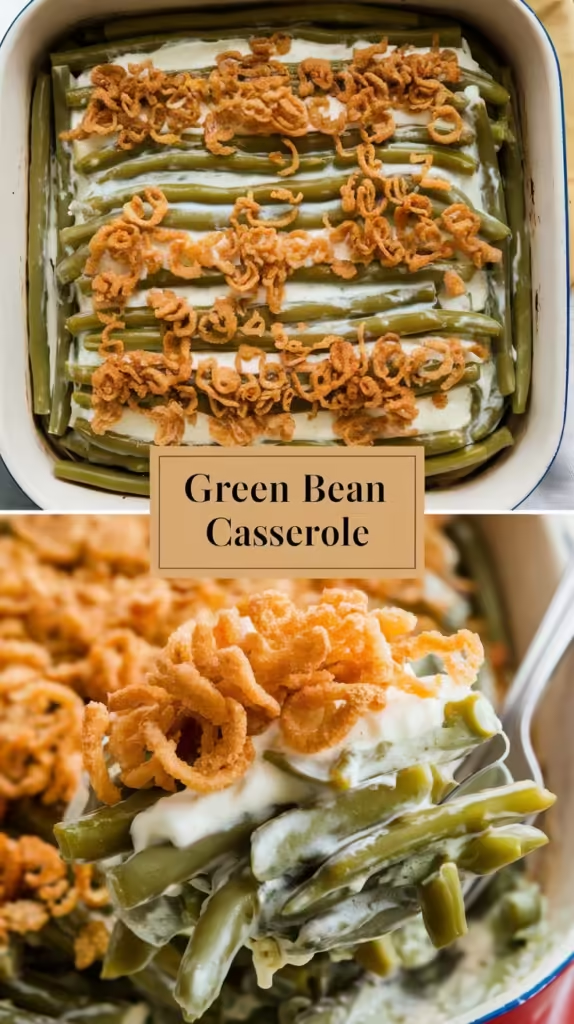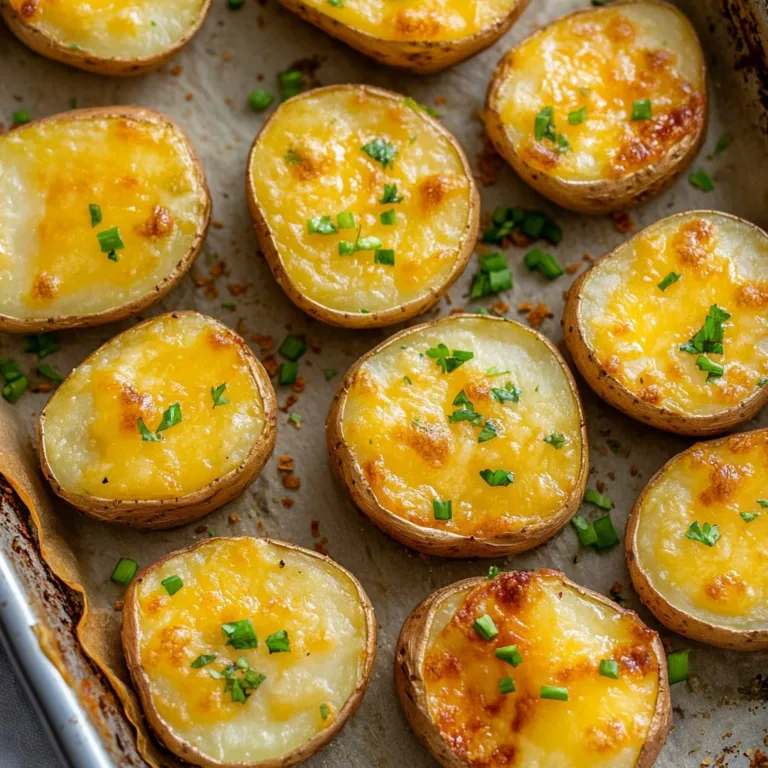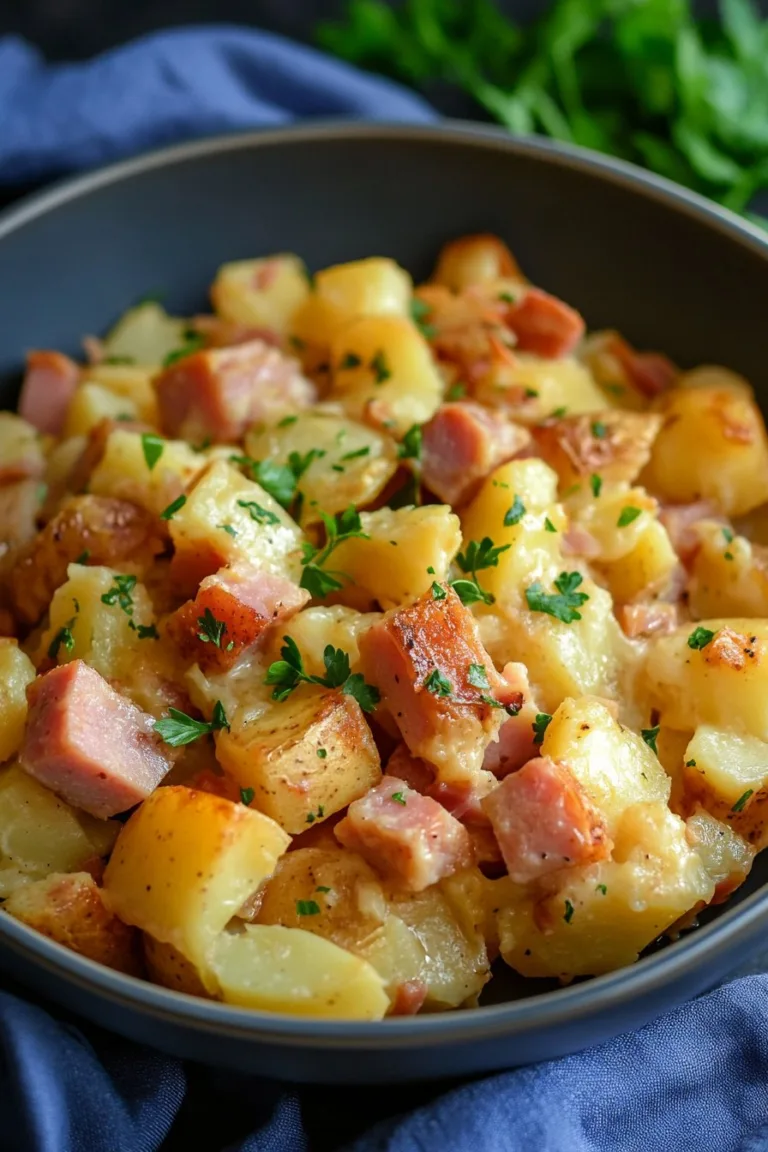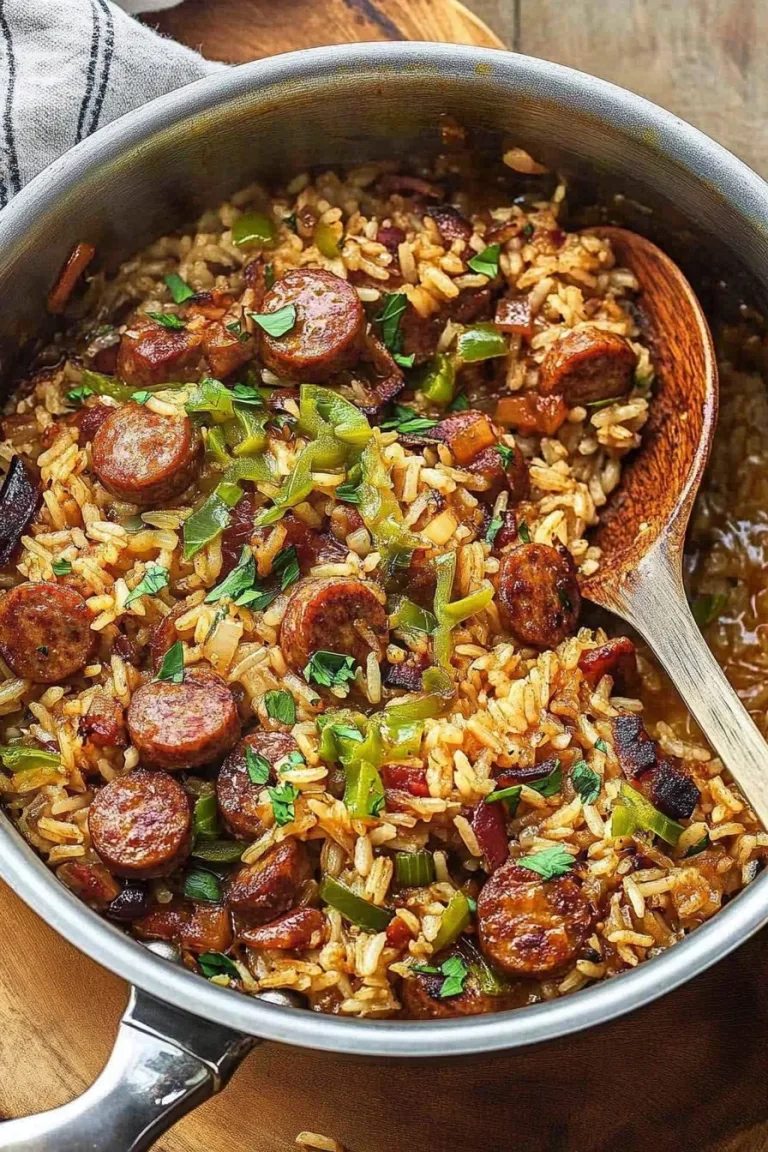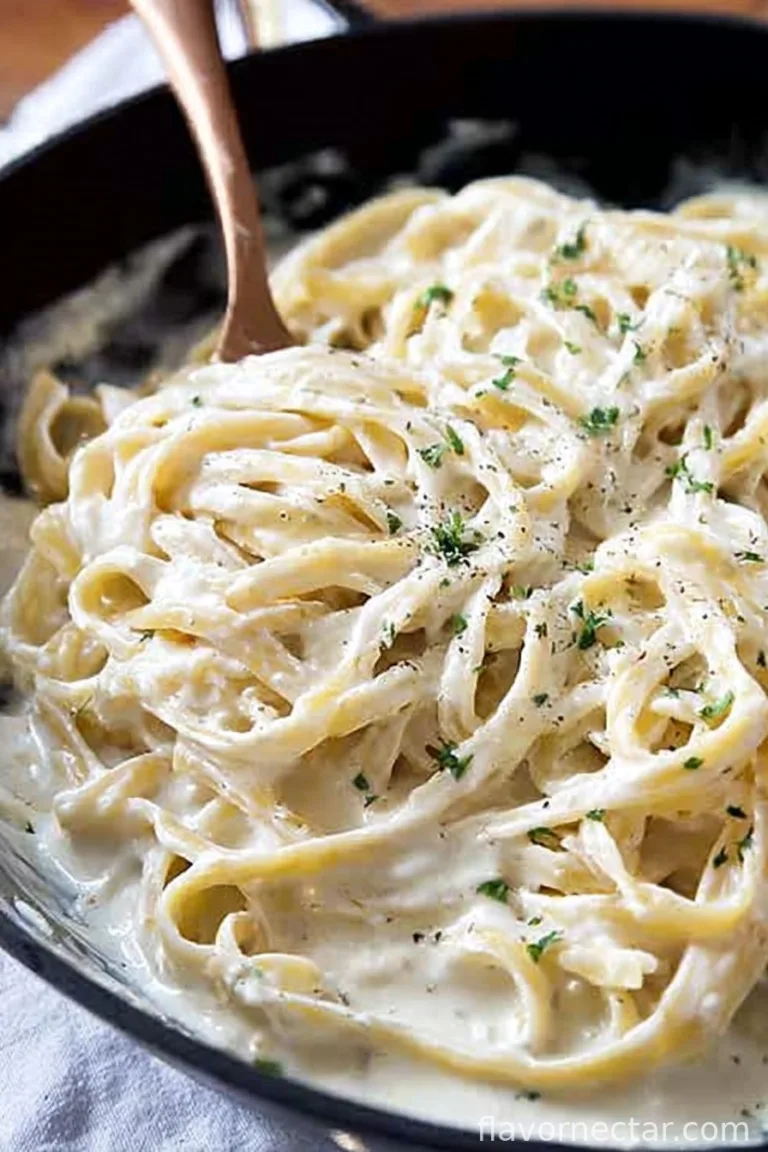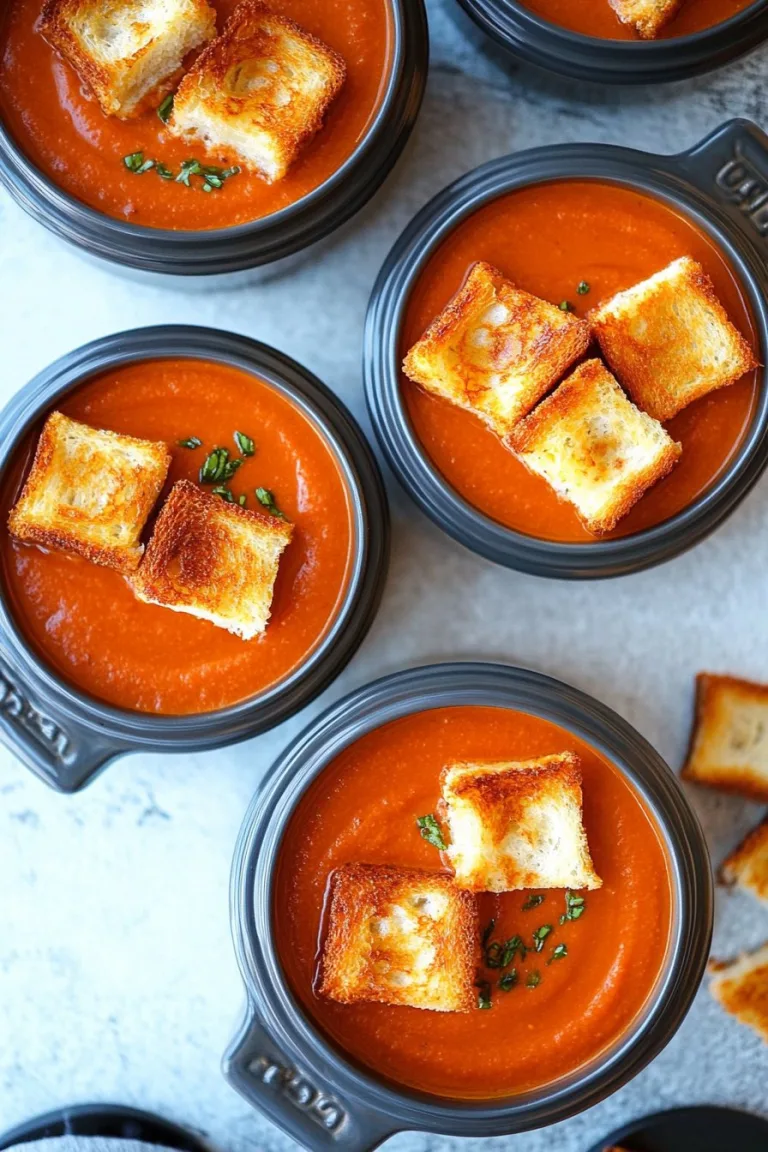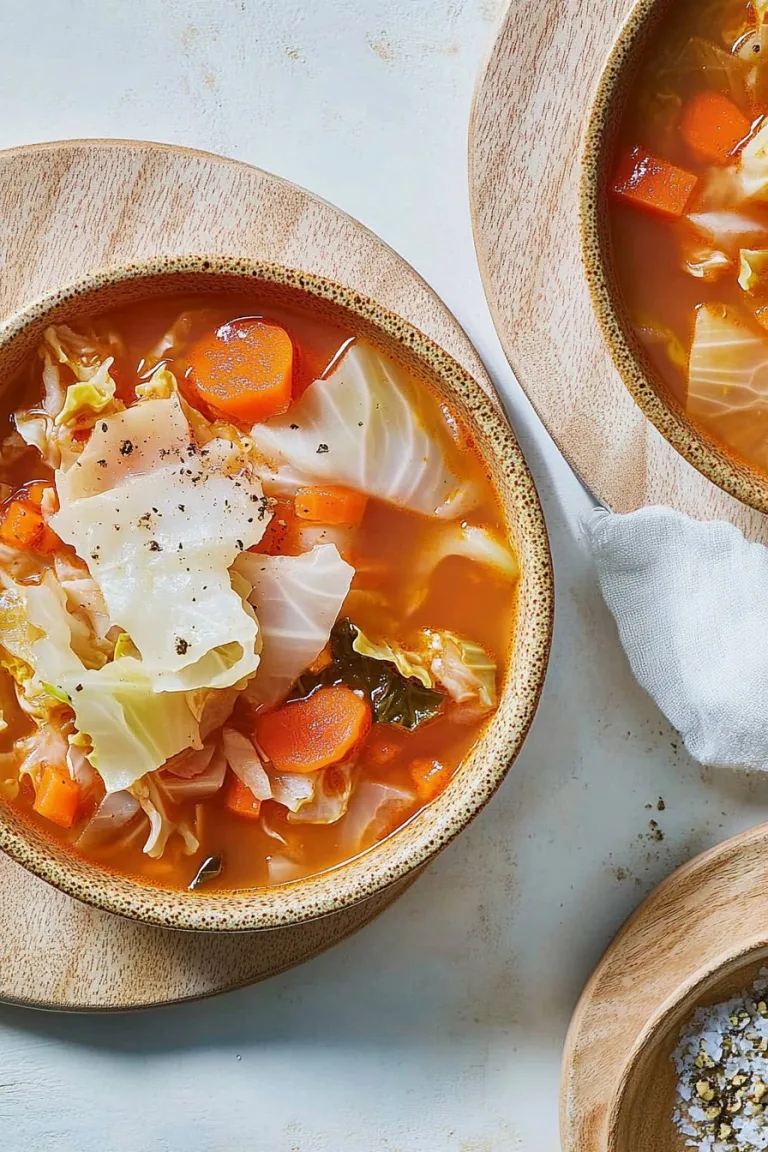Introduction
Few dishes capture the essence of comfort food quite like Green Bean Casserole. This beloved dish, often synonymous with holiday feasts, is a staple on many American tables, especially during Thanksgiving. My first memory of this casserole is from my grandmother’s cozy kitchen, where its savory aroma filled the air as we gathered around her table. The Green Bean Casserole is more than just a dish; it’s a tradition, a memory, and a celebration of flavors that bring families together.
This recipe holds a special place in the hearts of many, not just for its delicious taste but for the nostalgia it evokes. Originating in the 1950s, it quickly became a popular choice due to its simplicity and rich flavor. In this blog post, we’ll explore its cultural significance, delve into its origins, and uncover the secrets to making the perfect Green Bean Casserole. You’ll learn about the ingredients that make it unique, tips for preparation, and variations that can add a new twist to this classic.
Recipe Background
The Green Bean Casserole is deeply rooted in American culinary tradition. It was first introduced by Dorcas Reilly, a home economist who worked for the Campbell Soup Company in the 1950s. Her goal was to create a quick and easy recipe using everyday ingredients, which led to the invention of this iconic dish. The recipe’s simplicity and affordability contributed to its widespread popularity.
Traditionally, the casserole consists of green beans, cream of mushroom soup, and crispy fried onions. Over the years, many variations have emerged, including the addition of cheese, garlic, or bacon for enhanced flavor. Whether you’re sticking to the classic recipe or exploring new versions, the Green Bean Casserole remains a versatile and beloved dish.
The key ingredients, such as green beans and cream of mushroom soup, have made this casserole a unique blend of textures and flavors. In the following section, we’ll explore these ingredients in more detail.
Ingredient Deep Dive
At the heart of the Green Bean Casserole are its key ingredients. Fresh or canned green beans provide the base, each offering its own texture and flavor. Fresh green beans offer a crisp bite, while canned beans deliver a softer texture. For those seeking a fresh alternative, learn more about sourcing high-quality green beans.
The cream of mushroom soup is the magical binder that gives the casserole its creamy, savory foundation. Opt for a high-quality brand or make your own if you’re inclined. For a homemade version, you might explore how to make cream of mushroom soup.
Crispy fried onions add the final crunchy layer, providing a delightful contrast to the creamy base. These can be store-bought or made from scratch. If you’re looking for alternatives, consider using shallots or even crushed crackers for a different texture.
Equipment and Preparation
Preparing the perfect Green Bean Casserole requires some essential kitchen equipment. You’ll need a medium-sized casserole dish, a mixing bowl, and a skillet for sautéing. A sharp knife is crucial for preparing fresh ingredients.
The key to success lies in the preparation. Ensure your green beans are evenly cut to guarantee uniform cooking. When mixing the ingredients, gently fold them to avoid breaking the beans. Avoid common pitfalls such as overcooking the beans, which can lead to a mushy texture. For best results, follow the preparation techniques detailed at Cooking Techniques.
Step-by-Step Process
- Preheat your oven to 350°F (175°C). This ensures the casserole bakes evenly.
- Prepare the green beans: If using fresh beans, blanch them in boiling water for 3-5 minutes, then transfer to an ice bath to retain their vibrant color.
- Mix the base: In a mixing bowl, combine cream of mushroom soup, milk, soy sauce, and pepper. Stir until smooth.
- Combine ingredients: Add the green beans and half of the fried onions to the soup mixture. Gently fold together to coat the beans evenly.
- Assemble the casserole: Pour the mixture into the casserole dish, spreading it evenly. Top with the remaining fried onions.
- Bake: Place the dish in the preheated oven and bake for 25-30 minutes, or until the top is golden brown and bubbling.
- Visual cues: Look for a lightly browned top and bubbling edges as indicators of doneness. If using fresh onions, they should be crispy and golden.
- Troubleshooting: If the edges burn before the center is cooked, cover the casserole with foil and continue baking. For more on perfecting your baking technique, visit Baking Techniques.
Expert Tips and Variations
For a gourmet touch, consider adding sautéed mushrooms or garlic for extra depth of flavor. Lightly steaming the green beans before mixing can enhance their texture and color.
Common pitfalls include over-salting the dish. Be cautious with seasoning, especially if using store-bought soup which might already be salted.
Experiment with variations by adding cheese for a richer flavor or substitute cream of celery soup for a different taste profile. Seasonal adaptations could include adding roasted red peppers or using seasonal mushrooms.
Serving and Storage
Serve your Green Bean Casserole hot, straight from the oven. It pairs beautifully with roast turkey or chicken, making it an ideal side dish for festive occasions.
For an elegant presentation, garnish with fresh herbs like parsley or thyme. If you have leftovers, store them in an airtight container in the refrigerator for up to 3 days.
To reheat, place the casserole in the oven at 350°F (175°C) until warmed through. Avoid microwaving as it can make the onions soggy. For more tips on storing and reheating, refer to Food Safety Guidelines.
Nutritional Information
Each serving of Green Bean Casserole contains approximately 300 calories, with 30g of carbohydrates, 5g of protein, and 15g of fat. It’s a rich source of fiber and vitamin C from the green beans, making it a nutritious addition to your meal.
For those monitoring sodium intake, this dish offers around 200mg per serving. Adjust salt levels by choosing low-sodium soup alternatives. For more detailed nutritional insights, visit Nutrition Data.

